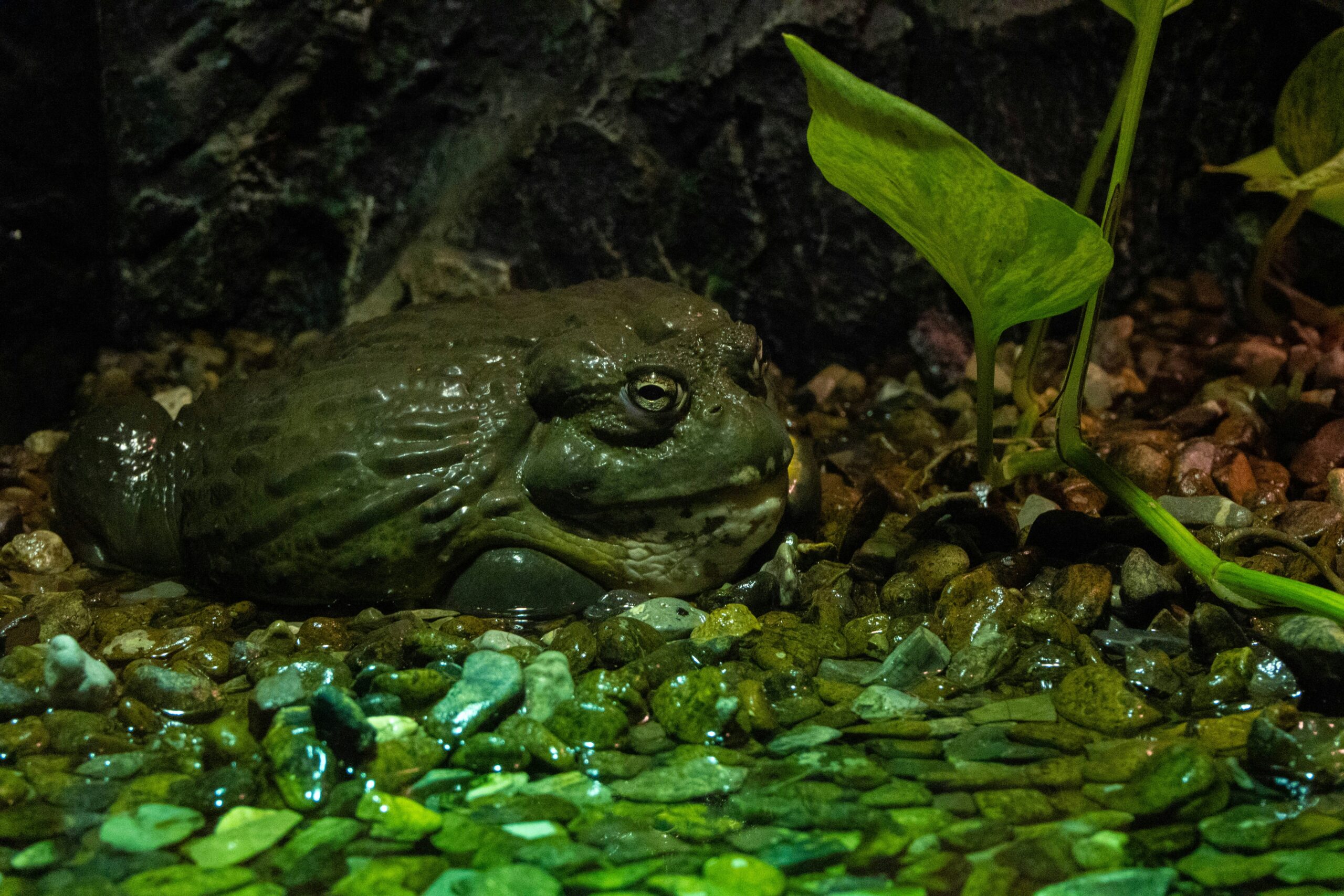Common Name: African Bullfrog
Scientific Name: Pyxicephalus adspersus
Other Names: Pixie Frog, Giant Bullfrog
Natural Habitat
The African bullfrog is native to sub-Saharan Africa, particularly in regions with seasonal rainfall. It inhabits open grasslands, floodplains, and scrublands. During the dry season, this species estivates underground, forming a protective cocoon until rains return. It emerges during the wet season to feed and reproduce.
Enclosure Requirements
Minimum Tank Size: 20 gallons for juveniles; at least 40 gallons for full-grown adults
Orientation: Horizontal space is essential due to their ground-dwelling and sedentary nature
Ventilation: Moderate airflow is necessary; use a secure screen lid
Lighting: No special UVB lighting required, but a day/night cycle should be maintained with ambient room lighting or a low-output LED
Humidity: 60%–80%, maintained with regular misting
Temperature Gradient: 75–82°F (24–28°C); a slight nighttime drop is acceptable
Substrate and Décor
Use deep, moisture-retentive substrates such as coconut fiber or a mix of topsoil and sphagnum moss to allow burrowing
Avoid sharp or inorganic materials that can cause impaction
Minimal décor is required; provide a large water dish for soaking, and optional hides if desired
Diet and Feeding
Obligate carnivores with powerful jaws and a voracious appetite
Feed primarily gut-loaded insects (crickets, roaches, nightcrawlers), occasional pinky mice or small rodents for adults
Juveniles: feed daily
Adults: 2–3 times per week
Supplements: Calcium with D3 twice weekly, multivitamin once every 1–2 weeks
Temperament and Handling
African bullfrogs are not social animals and are best observed, not handled. They are known for aggressive feeding behavior and can bite. Use tongs when feeding and avoid unnecessary contact.
Lifespan and Size
Adult Size: Males can exceed 9 inches and weigh over 2 pounds; females are smaller
Lifespan: 20–30 years with proper care
Compatibility and Cohabitation
Not suitable for cohabitation. These frogs are solitary and will attempt to eat anything that moves, including other frogs. Always house singly.
Breeding
Requires seasonal cycling to simulate natural rainfall. Breeding often occurs in temporary water pools after heavy rain. Males become vocal and territorial during breeding season.
Common Health Issues
Impaction from ingesting substrate or large prey
Nutritional deficiencies from inadequate supplementation
Skin infections due to unsanitary or overly wet environments
Obesity from overfeeding or lack of exercise
Hunter’s Tip
Because of their large size and strong feeding response, always use long feeding tongs. Spot-clean regularly to avoid bacterial buildup, and allow the substrate to dry slightly between mistings to prevent skin infections.
Fun Facts
Despite their name, African bullfrogs are not true “pixie” frogs — the nickname is ironically due to their massive size
They can survive months without food or water by estivating in a mucus cocoon underground
Males are known to protect their tadpoles by digging channels to fresher water sources
Hunter’s Picks
Recommended gear and supplies for optimal care of your African Bullfrog. All links support Hunters Exotics through affiliate commissions at no additional cost to you.
Large Glass Terrarium (Front-Opening)
Spacious, secure, and easy to clean. Ideal for full-grown bullfrogs.
Coconut Fiber Substrate
Great for burrowing and moisture retention. Safe and natural.
Sphagnum Moss
Helps maintain humidity and prevents substrate compaction. Mix with soil or use as a top layer.
Repti Calcium with D3
Essential for preventing metabolic bone disease and supporting bone health.
Reptizoo Digital Thermo-Hygrometer
Monitor temperature and humidity accurately in real-time.
Feeding Tongs (Long)
Necessary for safe feeding of large, aggressive eaters.



